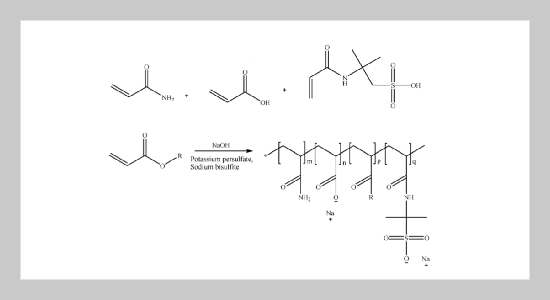REFERENCES
- [1] Seright, R. S., Campbell, A., Mozley, P. and Han, P., “Stability of Partially Hydrolyzed Polyacrylamides at Elevated Temperatures in the Absence of Divalent Cations,” SPE Journal, Vol. 15, No. 2, pp. 341348 (2010). doi: 10.2118/121460-PA
- [2] Chen, I. C., Yegin, C., Zhang, M. and Akbulut, M., “Use of Ph-responsive Amphiphilic Systems as Displacement Fluids in Enhanced Oil Recovery,” SPE Journal, Vol. 19, No. 6, pp. 10351046 (2014). doi: 10.2118/169904-PA
- [3] Zhang, G. Y. and Seright, R. S., “Effect of Concentration on Hpam Retention in Porous Media,” SPE Journal, Vol. 19, No. 3, pp. 373380 (2014). doi: 10.2118/ 166265-PA
- [4] Saleh, L., Wei, M. and Bai, B., “Data Analysis and Novel Screening Criteria for Polymer Flooding Based on a Comprehensive Database,” Paper SPE169093 Presented at SPE Improved Oil Recovery Symposium, Tulsa, Oklahoma, USA (2014). doi: 10.2118/169093- MS
- [5] Vermolen, E. C. M., van Haasterecht, M. J. T. and Masalmeh, S. K., “A Systematic Study of the Polymer Visco-elastic Effect on Residual Oil Saturation by Core Flooding,” Paper SPE 169681 Presented at SPE EOR Conference at Oil and Gas West Asia, Muscat, Oman (2014). doi: 10.2118/169681-MS
- [6] Deng, Q., Li, H., Li, Y., Cao, X., Yang, Y. and Song, X., “Rheological Properties and Salt Resistance of a Hydrophobically Associating Polyacrylamide,” Australian Journal of Chemistry, Vol. 67, No. 10, pp. 1396 1402 (2014). doi: 10.1071/CH14204
- [7] Luo, W., Ma, D., Lin, M., Liu, G., Nie, X. and Lin, Q., “Matching Relation between Hpam Polymer DQ3500 and Pores of Reservoir Rock,” Procedia Engineering, Vol. 18, pp. 261270 (2011). doi: 10.1016/j.proeng. 2011.11.041
- [8] Seright, R. S., Lindquist, W. B. and Cai, R., “PoreLevel Examination of Gel Destruction During Oil Flow,” SPE Journal, Vol. 14, No. 3, pp. 472476 (2009). doi: 10.2118/112976-PA
- [9] Kang, W. L., Wang, X. Z., Wu, X. Y., Meng, L. W., Liu, S. R., Xu, B. and Shan, X. H., “Solution Behavior of Two Novel Anionic Polyacrylamide Copolymers Hydrophobically Modified with n-benzyl-n-octylacrylamide,” Polymer Engineering & Science, Vol. 52, No. 12, pp. 26882694 (2012). doi:10.1002/pen.23226
- [10] Laura, M. G., Alejandro, J. M., Philippe, M. and Lionel, C., “Time Effects on the Rheological Behavior of Hydrophobically Modified Polyacrylamide Aqueous Solutions Mixed with Sodium Dodecyl Sulfate (SDS),” Colloids and Surfaces a: Physicochemical and Engineering Aspects, Vol. 330, No. 23, pp. 168175 (2008). doi: 10.1016/j.colsurfa.2008.07.046
- [11] Gao, B., Jiang, L. and Liu, K., “Microstructure and Association Property of Hydrophobically Modified Polyacrylamide of a New Family,” European Polymer Journal, Vol. 43, No. 10, pp. 45304540 (2007). doi: 10.1016/j.eurpolymj.2007.03.049
- [12] Bai, J., Wassmuth, F. R., Jost, R. and Zhao, L., “Hydrophobically-modified Cellulosic Polymers for Heavy Oil Displacement in Saline Conditions,” Paper SPE 157917 Presented at SPE Heavy Oil Conference Canada, Calgary, Alberta, Canada (2012). doi: 10. 2118/157917-MS
- [13] Bai, B., Zhou, J., Liu, Y. and Tongwa, P., “Therodissoluble Polymer for In-depth Mobility Control,” Paper IPTC16991 Prepared for Presentation at the International Petroleum Technology Conference Held in Beijing, China (2013). doi: 10.2523/16991-MS
- [14] Zhao, F., Du, Y. K. and Xu, J. K., “Molecular Morphology of Modified Partially Hydrolyzed Polyacrylamide (MHPAM) on Mica Substrates and Langmuir Blodgett Films of MHPAM/CTAB Complexes as Observed by AFM,” European Polymer Journal, Vol. 43, No. 3, pp. 797801 (2007). doi: 10.1016/j.eurpolymj. 2006.12.028
- [15] Shashkina, Y. A., Zaroslov, Y. D., Smirnov, V. A., Philippova, O. E., Khokhlova, A. R., Pryakhinab, T. A. and Churochkinab, N. A., “Hydrophobic Aggregation in Aqueous Solutions of Hydrophobically Modified Polyacrylamide in the Vicinity of Overlap Concentration,” Polymer, Vol. 44, No. 8, pp. 22892293 (2003). doi: 10.1016/S0032-3861(03)00043-0
- [16] Gao, B., Guo, H., Wang, J. and Zhang, Y., “Preparation of Hydrophobic Association Polyacrylamide in a New Micellar Copolymerization System and its Hydrophobically Associative Property,” Macromolecules, Vol. 41, No. 8, pp. 28902897 (2008). doi: 10.1021/ma 701967b
- [17] Picton, L., Charpentier-Valenza, D., Merle, L., Mocanu, G. and Muller, G., “Rheological Properties of Hydrophobically Modified Carboxymethylcelluloses,” Carbohydrate Polymers, Vol. 60, No. 1, pp. 8794 (2005). doi: 10.1016/j.carbpol.2004.11.030
- [18] Kim, J. C., “Thermo and UV Photo-triggerable Monoolein Cubic Phase Bearing Poly(Hydroxyethyl Acrylate-co-coumaryl Acrylate-co-octadecyl Acrylate),” Journal of Dispersion Science & Technology, Vol. 36, No. 6, pp. 803810 (2014). doi: 10.1080/01932691.2014. 924859
















